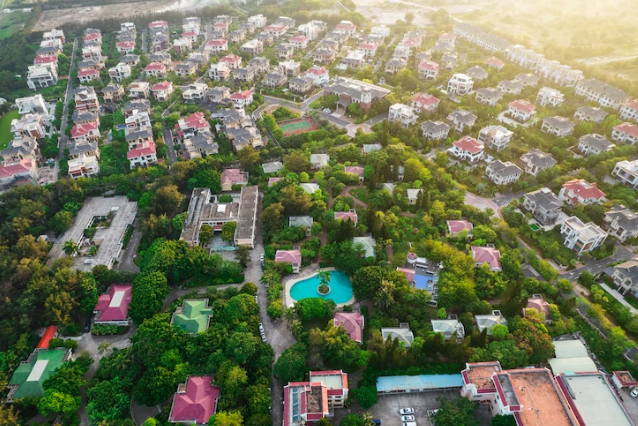Sustainable architecture, a revolutionary concept in the real estate industry, has gained significant attention in recent years due to its positive impact on the environment and the quality of life for inhabitants. With an increasing global focus on environmental preservation and combating climate change, the demand for sustainable buildings is on the rise. In this article, we explore the growing prominence of sustainable architecture and its profound effects on green real estate for a better future. Let’s delve into the key aspects that make sustainable architecture a driving force for change.
The Rise of Sustainable Architecture
Sustainable architecture, also known as green architecture or eco-friendly architecture, refers to the practice of designing and constructing buildings that minimize their negative impact on the environment. It takes into account energy efficiency, use of renewable resources, waste reduction, and environmentally conscious materials to create structures that are eco-friendly and sustainable.
Understanding the Essence of Sustainable Architecture
At the core of sustainable architecture lies the aim to strike a balance between the built environment and the natural ecosystem. It strives to harmonize human needs with ecological responsibility, fostering a future where economic, social, and environmental dimensions coexist in harmony.
Key Principles of Sustainable Architecture
- Energy Efficiency: Sustainable buildings are designed to optimize energy consumption and reduce greenhouse gas emissions. They incorporate energy-efficient systems and renewable energy sources such as solar panels and wind turbines.
- Water Conservation: Sustainable architecture emphasizes water efficiency through technologies like rainwater harvesting and low-flow plumbing fixtures, helping to conserve water resources.
- Environmentally Friendly Materials: The use of eco-friendly building materials, such as recycled or locally sourced materials, minimizes the environmental impact of construction.
- Waste Reduction and Recycling: Sustainable buildings employ waste reduction strategies during construction and operation, promoting recycling and minimizing landfill waste.
- Natural Ventilation and Lighting: By leveraging natural ventilation and daylighting, sustainable architecture reduces the need for artificial lighting and HVAC systems, resulting in lower energy consumption.
Sustainable Architecture: Transforming Green Real Estate
The adoption of sustainable architecture principles has led to a transformative impact on the real estate sector. Green real estate, which comprises environmentally friendly, energy-efficient, and sustainable properties, has become increasingly popular among buyers, investors, and developers.
The Growing Demand for Green Real Estate
As awareness of environmental issues rises, so does the demand for green real estate. Homebuyers and businesses are now seeking properties that align with their eco-conscious values and offer long-term cost savings through reduced energy consumption.
Economic Benefits of Sustainable Buildings
Contrary to the misconception that sustainable buildings are cost-prohibitive, they often prove to be economically advantageous in the long run. Energy-efficient buildings result in lower utility bills and operational costs, offering substantial savings over time.
Enhancing Quality of Life
Sustainable architecture goes beyond environmental benefits; it also enhances the quality of life for occupants. These buildings provide better indoor air quality, ample natural light, and a comfortable living or working environment.
Resilience to Climate Change
Green real estate is better equipped to withstand the challenges posed by climate change. Sustainable buildings are designed to adapt to changing weather patterns, ensuring the safety and well-being of occupants in extreme conditions.
LSI Keyword: Eco-Friendly Neighborhoods and Communities
The rise of sustainable architecture has extended beyond individual buildings to the development of entire eco-friendly neighborhoods and communities.
Planning Eco-Friendly Communities
Developers are now integrating sustainable design principles into community planning, incorporating green spaces, renewable energy sources, and sustainable transportation options.
Benefits of Eco-Friendly Neighborhoods
Eco-friendly neighborhoods offer residents access to nature, reduced pollution, and enhanced social cohesion, fostering a sense of community and well-being.
LSI Keyword: Sustainable Architecture in Commercial Real Estate
Commercial real estate has also embraced the trend of sustainable architecture, with businesses recognizing the value of environmentally responsible office spaces.
Green Office Buildings
Companies are opting for green office spaces that promote employee well-being, productivity, and sustainability while aligning with their corporate social responsibility objectives.
Financial Incentives for Sustainable Commercial Buildings
Governments and local authorities often provide financial incentives, such as tax breaks and grants, to encourage businesses to invest in sustainable office spaces.
LSI Keyword: The Future of Sustainable Architecture
The future of sustainable architecture looks promising, with ongoing advancements and innovations driving positive change.
Technological Advancements in Sustainable Design
Rapid advancements in technology are enabling architects to create more energy-efficient and eco-friendly buildings using smart systems and AI-driven solutions.
Net-Zero Buildings
Net-zero buildings, which produce as much energy as they consume, represent the pinnacle of sustainable architecture and are likely to become more prevalent in the future.
FAQs
How does sustainable architecture benefit the environment?
Sustainable architecture reduces energy consumption, minimizes waste, and lowers greenhouse gas emissions, contributing to a healthier environment.
Are sustainable buildings more expensive to construct?
While sustainable buildings may have higher upfront costs, their long-term benefits, such as reduced operating expenses, make them cost-effective in the long run.
Can sustainable buildings improve indoor air quality?
Yes, sustainable buildings often incorporate features that improve indoor air quality, promoting the health and well-being of occupants.
What role do renewable energy sources play in sustainable architecture?
Renewable energy sources like solar and wind power are essential components of sustainable architecture, providing clean and renewable energy.
How can businesses contribute to sustainable architecture?
Businesses can invest in sustainable office spaces, promote energy efficiency, and adopt eco-friendly practices to support sustainable architecture.
Are there any certifications for green buildings?
Yes, there are various green building certifications such as LEED (Leadership in Energy and Environmental Design) that validate a building’s sustainability.
Conclusion
The rise of sustainable architecture has revolutionized the real estate industry, with green buildings becoming the future of construction. As the world recognizes the importance of environmental responsibility, sustainable architecture offers a promising path toward a better future. Embracing eco-friendly practices and investing in green real estate can have a positive and lasting impact on the environment and society as a whole.

amoxil us – order generic amoxil ipratropium 100 mcg over the counter